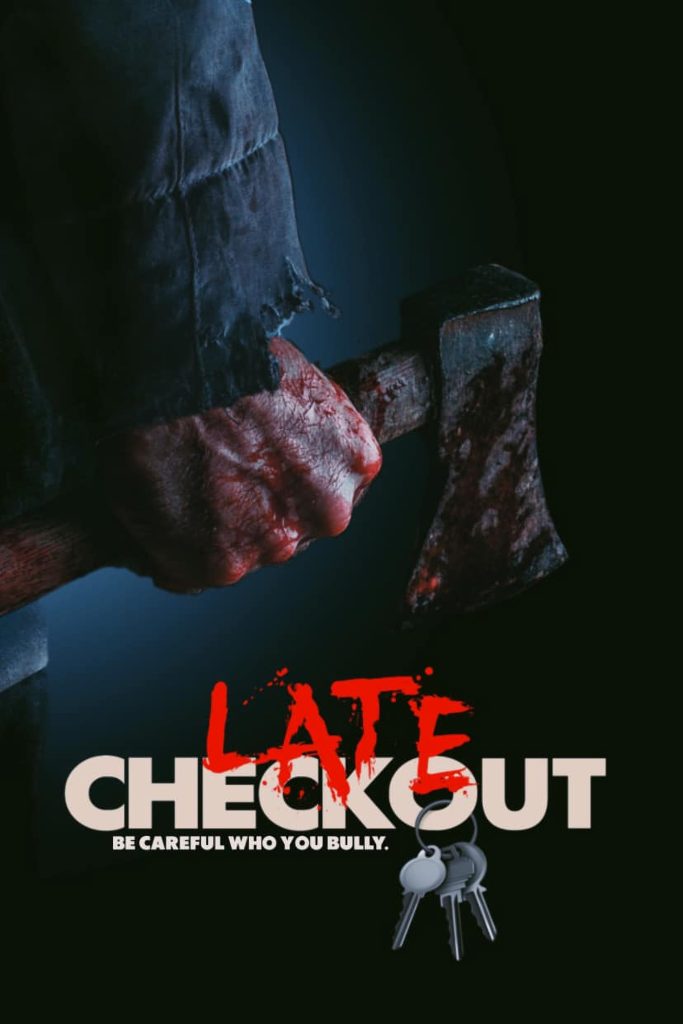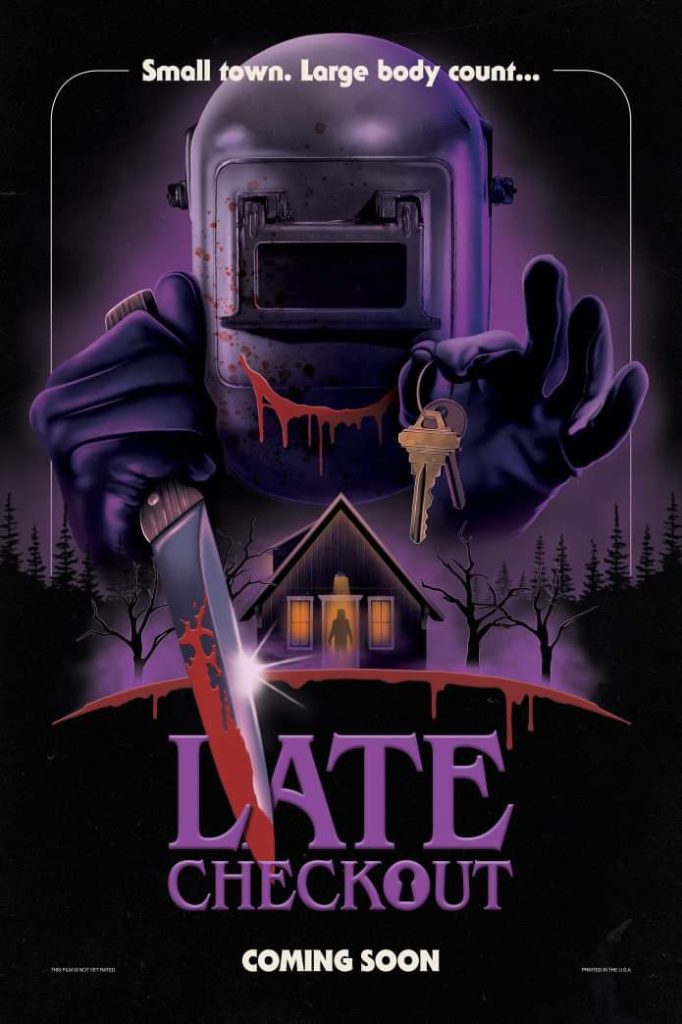In the new slasher film Late Checkout, directed by Josh Graves and written by Graves and Molly Souza, checking in is easy, but checking out might just cost you your life.
Late Checkout follows a group of friends who have rented a cabin for a weekend getaway, unaware of the terror that awaits them. What begins as a harmless weekend escape quickly descends into a bloodbath, when a mysterious killer arrives at their door and starts picking off the unsuspecting friends one by one. As bodies continue to drop, the surviving friends soon begin to realize the terrifying truth, that they are merely pawns in a twisted game of cat-and-mouse.
Unfortunately for Late Checkout, it fails to bring anything original to the slasher table. Instead, it leans heavily into tropes and plot devices from classic films that have come before it. The movie adheres to the well-worn formula of disposing of its characters one at a time while the others remain oblivious to their impending doom, despite the claustrophobic cabin setting. This tired setup has been seen countless times in previous slasher films, and Late Checkout does little to deviate from the script.
Initially, the film seems to follow the path of a typical slasher movie, with a silent, relentless killer reminiscent of Jason Voorhees or Michael Myers. However, midway through its runtime, the killer’s behavior shifts to a more taunting and sadistic approach, directly mimicking the actions of Ghostface from the Scream franchise. This includes dangling keys in front of the victims and placing a phone just out of reach, only to wound them when they attempt to grab it, rather than going for the kill as they had previously done.
This abrupt change in the killer is confusing and feels out of place considering what we have seen up to this point. When the reveal of a second killer finally occurs, this sudden change makes sense, but it also solidifies this film’s blatant attempt to rip off Scream.
One of the more frustrating aspects of Late Checkout is the killer’s almost supernatural ability to be anywhere and everywhere, not unlike the often joked about teleportation abilities of Jason in Jason Takes Manhattan. This is taken to the extreme in the final act when one of the killers is suddenly hiding in the back seat of a car with no logical explanation of how they got there.

Late Checkout also suffers from a short runtime of only 1 hour and 9 minutes, which makes the story feel rushed and underdeveloped. The group arrives at the cabin and immediately starts falling victim to the killer, leaving no time for proper plot development or character building. This issue is further compounded by an abrupt and unnecessary detour into a “movie within a movie,” where the film stops to show fake footage from another movie. This strange interlude chews up precious screen time in an already short film and kills any momentum the story had built up.
The film attempts to introduce several subplots during its brief run time, such as one friend’s intention to propose to his girlfriend and another involving a boyfriend showing up uninvited, but these storylines are barely explored and ultimately serve no purpose. The characters quickly become cannon fodder for the killer, and their relationships and motivations are left underdeveloped. As a viewer, it’s difficult to care about these characters when they are so thinly written that their names are forgettable.
If Late Checkout was aiming to pay homage to or copy elements from Scream, it failed to understand what made that film great: fully-developed characters. Scream took the time to flesh out its characters, making the audience invested in their fates. In contrast, Late Checkout feels disjointed, prioritizing the kills over character development and story. It seems as though the kills were written first, and the story was an afterthought.
The film also attempts to lure fans of the slasher genre by featuring Felissa Rose, known for her portrayal of Angela in Sleepaway Camp, in a brief role as one of the killers. However, this casting choice feels like a gimmick rather than a meaningful addition to the story.

One positive aspect of Late Checkout is its use of practical effects. Despite the film’s likely limited budget, the filmmakers were able to achieve well-crafted practical effects for the gory death sequences. However, these effects alone are not enough to save the film from its numerous shortcomings. Had Late Checkout been released during the heyday of slasher films, it might have made an impact with its particularly gory death sequences and practical effects. However, in a genre now so saturated with titles, a film cannot stand out on practical effects alone, unless it reaches the level of films like Terrifier.
In conclusion, Late Checkout fails to stand out due to its cliched approach that feels too similar to the films that came before it. It’s obvious that Graves and Souza have a deep love for the slasher genre, but they allowed their admiration for other films to shape their own work too heavily. Rather than paying homage to classic slasher movies, Late Checkout adheres too closely to their blueprints, resulting in an unoriginal final product. Fans of the genre would be better served by revisiting the classics or seeking out more inventive and well-crafted contemporary offerings.

